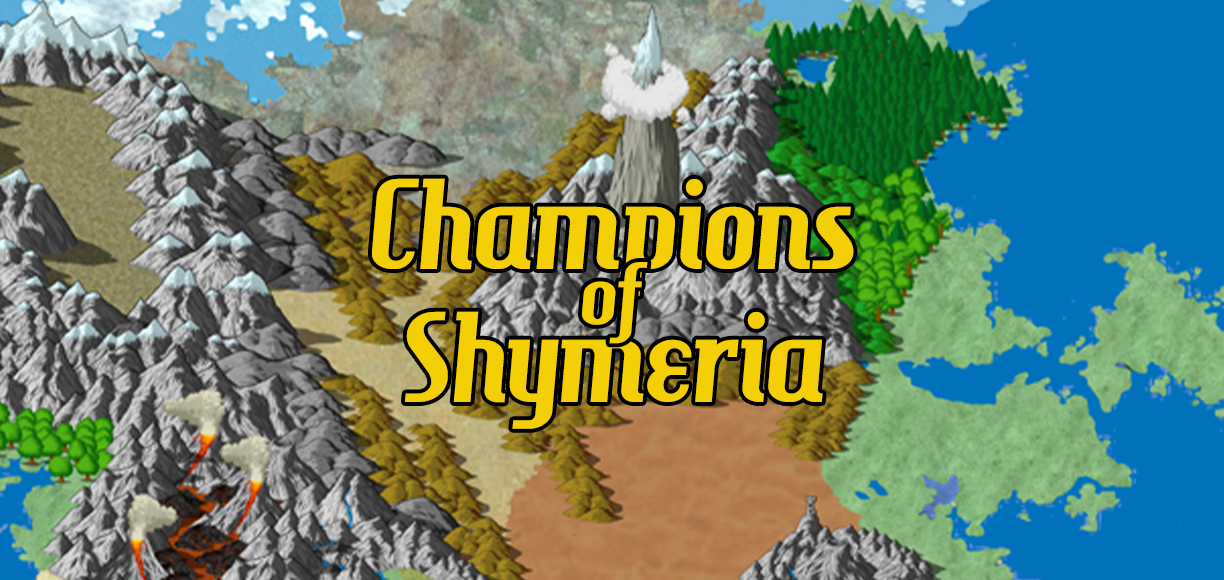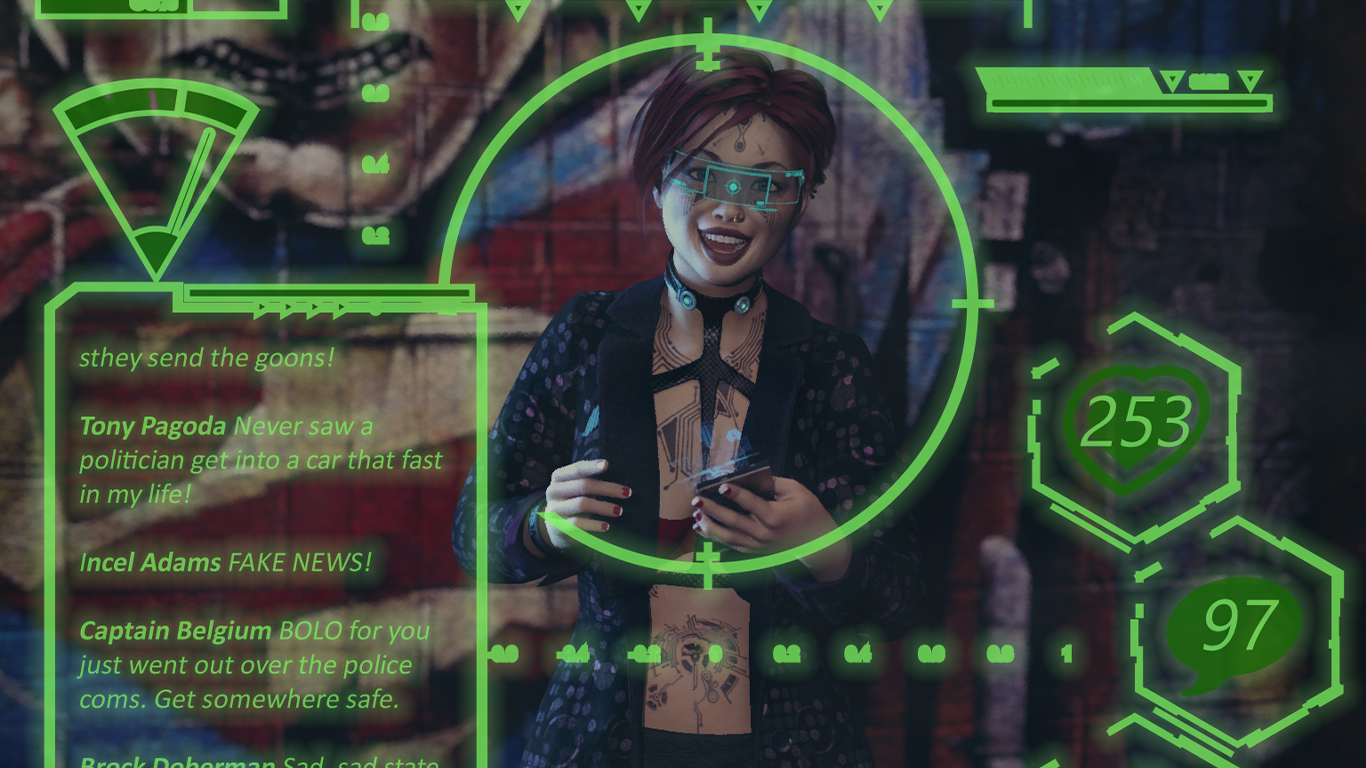We may earn money or products from the companies mentioned in this post.
Before we get into the next section of Guardians of Shymeria campaign design, I realized that I’ve been missing an important game-specific trait. Since characters become Guardians as recognition for an act of great heroism, it would probably be nice to know what the characters did to get noticed by the Guardians. So I’m going to be adding a “Heroic Deed” trait to Character Concept. At first I thought about putting it somewhere on the story info side of the character sheet but (1) it’s kind of a sub-trait of Backstory and (2) I can think of a lot of cases where it makes sense for a character to get a Concept Bump based on the heroic act that got him an invitation to the order (especially if the deed involved a still-active villain or faction).
Speaking of villains and factions, we’ve built up a nice little diorama of Shymeria so far, but we need one more ingredient to make it a place where the characters can have adventures: conflict. While adventures are packed with their own conflicts (Man vs. Nature, Man vs. Self, Man vs. Spiked Pit Trap, or whatever), they also tend to happen when more long-running conflicts come to a head. Right now, we’re mostly concerned with that second group. It’s time to look at the things we’ve already created and figure out where the tensions are and how these tensions might manifest themselves in ways that the characters could get mixed up in. We’re not so much looking for specific quests or missions as situations that could lead to quests and missions.
The Big Conflict
Most stories (and RPGs) have one big conflict, usually built into the premise of the game, that generates many of the the smaller conflicts that the characters face: the threat posed by a villainous spy organization, survival in a world overrun by zombies, or the eternal battle between monsters who want to peacefully coexist in a dungeon and lunatics who want to kill them and take their stuff. Sometimes this big conflict is something that can be defeated (the enemy spy organization can be crushed), sometimes it’s eternal (those monsters aren’t going to kill themselves and loot their own bodies), and sometimes it’s somewhere in between (humanity might eventually beat back the zombie threat, but it could take generations).
In Guardians of Shymeria, the big conflict is basically the Guardians’ mission statement: there are threats to Shymeria, and it’s up the Guardians to defeat them. This is an eternal conflict (there will always be threats), but over the course of the campaign it the conflict will manifest as a specific threat (Bloodgrave the Demon King) that can and must be defeated; if Bloodgrave wins, there won’t be an Shymeria left to protect. Early in the game, the threat of Bloodgrave will be mostly theoretical, with the heroes dealing with more run-of-the-mill threats like marauding monsters or Skeletor-like villains orchestrating their schemes-of-the-week. By the end of the first season, though, it should be clear that Bloodgrave is finally moving against the rest of the world. Depending on how quickly things escalate from there, this could lead into a period of intelligence and resource gathering with minor skirmishes in the Scarred Lands or directly into an all-out war between Good and Evil. By default, the end of the war is also the end of the campaign, but if players want to keep going the game could shift to rebuilding or (if Bloodgrave wins) freeing Shymeria from enemy control.
Character-driven Conflicts
Hopefully at least some of your characters have built-in story hooks, so make sure to take a look at the PCs, talk to the players, and look for conflicts that the player have set up for their characters, then work out what you need to make those conflicts play out in the game. Looking at our Sample of Play Theater characters, we can find a few character-driven conflicts:
- Shalamar the Sorceress has the most blatant plot hook of all the characters in her backstory. Her master and a bunch of other wizards were captured by demonlings and she’s made it her mission to find them. The search for Whatshisname the Wizard might make a good B-plot for the first season of the campaign, and could even be used to build up to the reveal that Bloodgrave has decided it’s time for world domination. Maybe he’s enslaved them to work on a super weapon or he’s draining their magical energy to increase his own occult power or something.
- Tel Tylwyg, the Snuk explorer/inventor, also has a potential backstory conflict, since he was abandoned by his tribe. Since this one doesn’t have a clearly actionable plot hook, the GM will need to talk to the player to determine if there’s something here that can play out in the game or if it’s just a story the GM should create an opportunity for the character to tell.
- Sir Uriel Lightblade, the heroic knight, also has a mission: to find the legendary Sword of Acala, the First Light Blade. This is a big quest and should probably take most of the campaign (so he can find it just in time to use it in the battle against Bloodgrave) but it can create conflict since there are almost certainly other people looking for the sword and sometimes Uriel will have to choose between following down a new lead on the sword and fulfilling his other duties. He’s also got a couple less obvious conflict-generating traits. First, he’s a noble, which could come with all kinds of obligations and expectations that can make his life more interesting. Second, he’s a member of a Knightly Order, which could get him mixed up in internal politics, rivalries with other orders, tournaments, and situations where his membership in the order conflicts with his status as a Guardian.
- Glob Lobber is just a big mutant lizard man that throws slime at people. His backstory is that he was captured by demonlings and rescued by Uriel, but it’s really more a source of motivation (in the form of loyalty to Uriel and/or a mean-on for demonlings) than a potential subplot. That’s ok. Some players are happy to play supporting characters, others find their character sub-plots as play progresses.
Background Conflicts
Background conflicts are things that are happening in the setting regardless of whether or not the characters get involved with them: political maneuverings, trade wars, natural disasters, fads, or whatever. Since you’ve already got a bunch of stuff you need to define in more detail before the game starts, the best way to find background conflicts is to think about how the different groups relate to each other and how they fit into the world. Come up with a little detail about the group’s activities and goals, then figure out how that group’s actions help or hinder other groups and you’re bound to find some tensions. Once you find the conflicts, look for ways that the characters might become involved in or aware of the conflicts.
Conflicts of the Week
I said earlier that we weren’t really talking about adventures right now, but Conflicts of the Week are kind of close. They’re basically generic adventure structure that just requires the GM to plug in the details. They’re great for early in the game when the bigger plotlines haven’t been introduced and everyone’s still getting a feel for the setting and the characters, but they can also provide a break from the main plot or filler when the GM needs to figure out what happens next in the ongoing storyline. Some sample Conflicts of the Week for Guardians of Shymeria include:
- One of the never-ending natural disasters in the Scarred Lands uncovers a new ruin; the PCs are sent to explore it.
- A monster or band of marauders attacks travelers or people living on the edge of the scarred lands
- A recurring villain hatches his latest scheme to defeat the Guardians of Shymeria once and for all! [insert evil laugh]
- Somebody finds a powerful piece of technology or magic in the ruins and makes very poor choices about how to use it
- Different factions vie for control of an artifact/technological wonder/contrivium deposit
As you sort out your conflicts, resist the urge to play them out. Unless the conflict is so far in the background that the characters have no chance of getting involved, resolving the conflicts is the PCs’ job, not the GM’s. The GM should only decide how a conflict works itself out if the players choose to ignore it. When you do, remember that ignoring a conflict doesn’t make the characters immune to the fallout. If the PCs decide that going to the ball is more important than preventing Necro-Man from raising an army of undead, the ball is going to get attacked by zombies. Any other outcome would be a betrayal of narrative trust.






